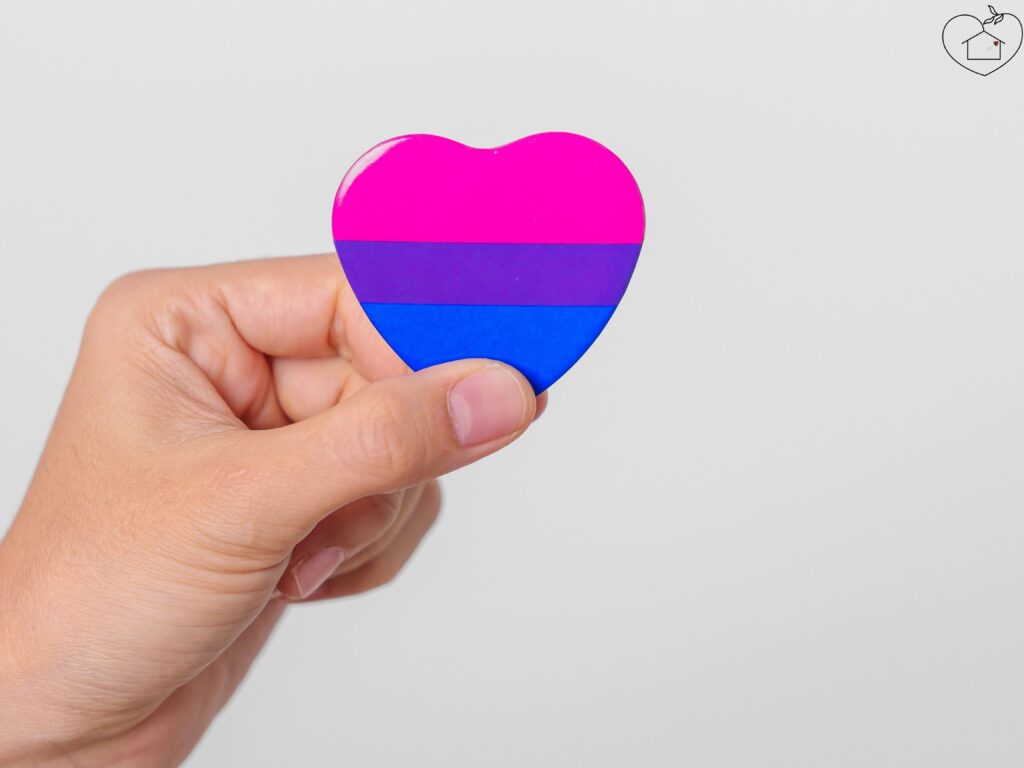As society becomes more inclusive and aware of diverse romantic and sexual orientations, terms like “biromantic” have gained visibility and importance. So, what does biromantic mean? A biromantic person experiences romantic attraction to more than one gender, but this identity is specifically about romantic—not sexual—attraction. Biromantic individuals may or may not experience sexual attraction at all, which makes this orientation distinct from bisexuality. Someone can be biromantic and asexual, or biromantic and bisexual, or hold any other sexual orientation. Comprehending the biromantic identity can help create more inclusive, empathetic, and respectful relationships.
In this article, we’ll examine the signs of being biromantic, how psychologists comprehend this orientation, and provide practical relationship tips for those partnered with a biromantic person.
Table of Contents
ToggleSigns You Might Be Biromantic
Biromantic people may take time to comprehend their identity because society often assumes that romantic and sexual orientation is the same. Here are some signs that someone might be biromantic:
1. You’ve Experienced Romantic Feelings for Multiple Genders
This is the most defining feature of being biromantic. You may have fallen in love or developed romantic crushes on people regardless of whether they are male, female, non-binary, or of another gender identity.
2. Your Romantic Orientation Doesn’t Always Align with Your Sexual Orientation
You may find that you are sexually attracted to a specific gender but romantically attracted to others—or to all genders. This distinction often prompts people to identify as biromantic rather than bisexual.
3. You Value Emotional Connection Over Gender
Biromantic individuals often describe feeling connected to people based on personality, emotional compatibility, and shared values rather than strictly gender presentation.
4. You’ve Felt Confused About Labels in the Past
If you’ve struggled to define your orientation because you felt a romantic attraction to multiple genders but didn’t feel sexually drawn to all, biromanticism could be a more accurate term for your experience.
5. You Recognize Romantic Crushes Differently Than Sexual Attraction
You might feel drawn to hold hands, go on dates, or build romantic partnerships with people of various genders, even if you don’t feel sexually attracted to them. That’s a key feature of biromantic attraction.
The Psychological Perspective on Biromanticism
Psychologists and sexuality researchers emphasize that romantic and sexual orientations are not always aligned, and both exist on separate spectrums. The recognition of orientations like biromantic, aromantic, and panromantic shows how people’s emotional and romantic attractions are just as complicated and varied as their sexual preferences.
From a psychological standpoint:
- Romantic attraction refers to the desire for emotional closeness, love, and companionship—which may or may not involve sexual attraction.
- Biromantic individuals experience romantic feelings across genders, which may challenge traditional binary notions of love and partnership
Researchers encourage the acceptance of romantic orientation diversity because it helps individuals comprehend themselves more fully, reduce internalized stigma, and build healthier relationships based on authentic attraction and identity.
10 Relationship Tips for Partners of Biromantic People
1. Educate Yourself About Romantic Orientation
Comprehending what it means to be biromantic is the foundation of a supportive relationship. Learn the difference between romantic and sexual attraction and understand that your partner’s identity is valid, even if it doesn’t mirror your own experiences. Respecting their orientation is an important part of emotional intimacy and trust.
2. Avoid Making Assumptions Based on Sexual Orientation
Just because someone is biromantic doesn’t mean they are also bisexual—or sexually attracted to more than one gender. Avoid assumptions and, instead, ask thoughtful, respectful questions. Be curious, not judgmental. Recognizing the difference between romantic and sexual orientations helps prevent miscommunication and unnecessary conflict.
3. Celebrate Their Identity Without Fetishizing It
Affirming your partner’s biromantic identity is important, but avoid turning it into a fantasy or stereotype. Statements like “That’s hot!” or “So you’re into threesomes?” can be dismissive or objectifying. Instead, show genuine interest in what being biromantic means to them personally and how it shapes their emotional world.

4. Be Open to Conversations About Their Past or Potential Attractions
Being biromantic means your partner may have had—or might develop—romantic feelings for people of various genders. Rather than viewing this as a threat, discuss their experiences with openness and emotional security. This builds a deeper level of trust and normalizes conversations about attraction.
5. Don’t Treat Their Identity as “Just a Phase”
Biromantic people often face skepticism about their identity, with others claiming it’s confusion or indecisiveness. Avoid invalidating your partner by suggesting their feelings will “change” or “settle down.” Take their identity seriously—it is a valid part of who they are.
6. Communicate Openly and Without Judgment
Healthy communication is vital in any relationship, but it’s especially important when guiding nuanced identities like being biromantic. Encourage safe, open conversations about feelings, attraction, and boundaries. If your partner expresses romantic interest in different genders, don’t react with insecurity or jealousy—respond with curiosity and empathy. The more you make space for honest dialogue, the deeper your trust and connection will grow.
7. Address Jealousy Through Emotional Security, Not Control
It’s normal to feel a twinge of insecurity knowing your partner can be romantically attracted to multiple genders. Instead of trying to suppress or control their identity, concentrate on strengthening your emotional bond. Talk about what you both need to feel secure in the relationship. Jealousy often lessens when both partners feel seen, valued, and emotionally safe.
8. Respect Their Need for Identity Affirmation
Your partner may not need you to constantly talk about their identity, but they do need to know that you see and accept them as biromantic. This might include respecting how they define their orientation, using correct language, or defending their identity in social or family settings when needed. Acknowledging their orientation in everyday life validates their experience and helps them feel emotionally supported.
9. Create a Relationship Dynamic That Works for Both of You
Being with a biromantic person doesn’t mean your relationship must look any different from others—but it does mean you should both feel free to design a dynamic that honors both of your identities and values. This could be monogamy, ethical non-monogamy, or something uniquely yours. What matters most is that both of you feel respected and emotionally fulfilled.
10. Offer Consistent Emotional Support Without Making It About You
Sometimes, your biromantic partner may experience invalidation, confusion from others, or difficulty explaining their identity. When they open up to you, resist the urge to relate everything back to your own feelings. Instead, listen, validate, and offer space. You don’t have to have all the answers—just being there with empathy and acceptance is enough. Support isn’t about fixing; it’s about showing up and honoring their truth.
Watch and Read!
- “Ace: What Asexuality Reveals About Desire, Society, and the Meaning of Sex” by Angela Chen
- “The Invisible Orientation” by Julie Sondra Decker
- “This Book Is Gay” by Juno Dawson
- “Sex Education” (Netflix)
- “Heartstopper” (Netflix)
- “BoJack Horseman” (Netflix)
FAQs
No. Biromantic refers to romantic attraction, while bisexual refers to sexual attraction. A person can be biromantic and asexual or biromantic and bisexual—they’re not interchangeable.
Absolutely. Being biromantic does not mean someone can’t commit or needs multiple partners. It simply means they are capable of romantic attraction to more than one gender, but their relationship style is a personal choice.
Start by listening without judgment, using the correct terminology, and validating their experiences. Avoid making assumptions or turning their identity into a curiosity.

